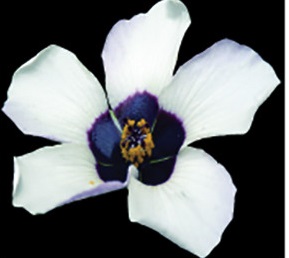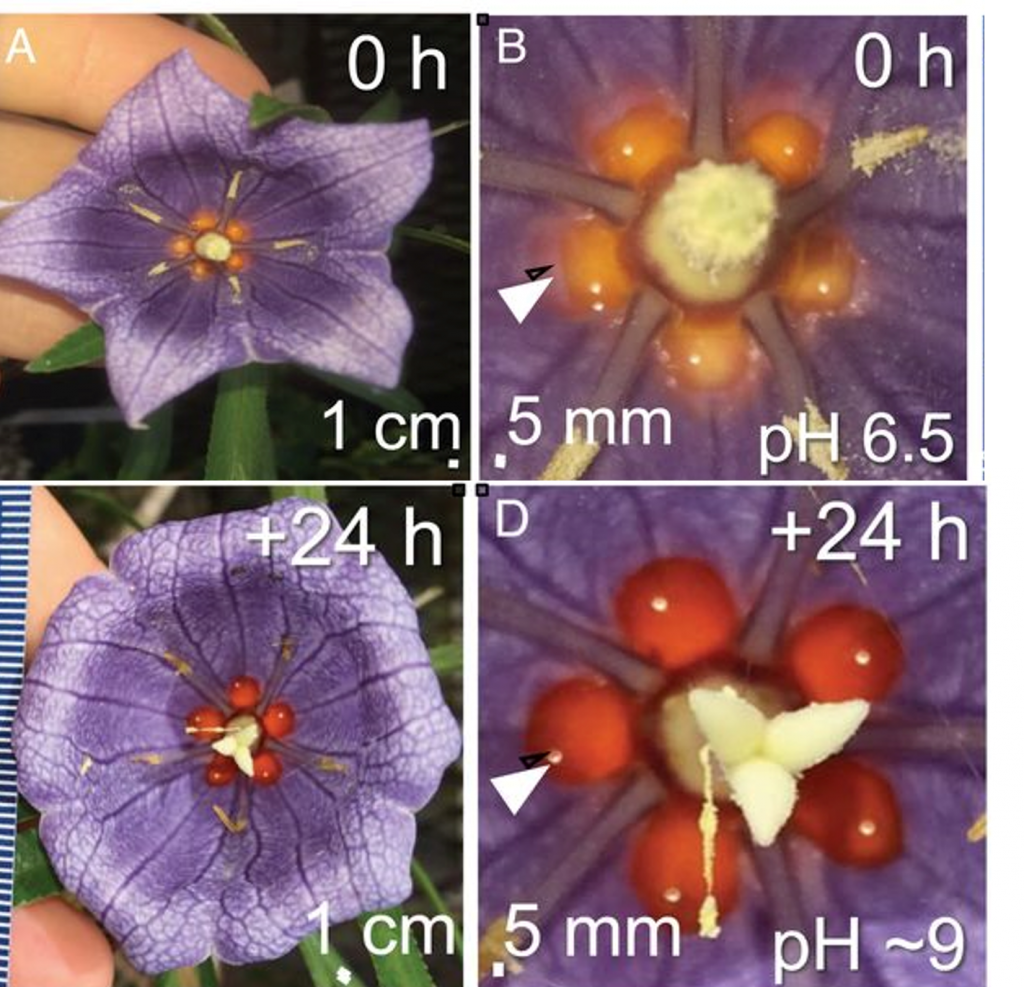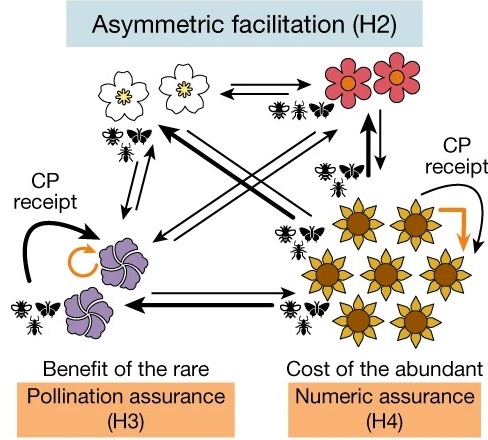
How did the daisy get its spots? Gene co-option and fly mimicry
Plant Science Research WeeklyThis is one of those “straight into the textbook” stories. Kellenberger et al. investigated the unusual petal pigmentation pattern of a South African daisy Gorteria diffusa, which has petals with odd lumpy irregular spots that mimic female flies and enhance pollination through sexual deception. The…

Cuticle chemistry in Hibiscus iridescence
Plant Science Research WeeklyThe long, long history of plant-pollinator interactions has led to a stunning variety of flower forms, including variations in petal color and iridescence. Color is caused by the accumulation of various pigments that selectively absorb certain wavelengths of light, whereas iridescence arises from surface…

Convergent evolution of red nectar in vertebrate-pollinated flowers (PNAS)
Plant Science Research WeeklyNesocodon mauritianus is about one out of 70 plant species that produce colored nectar. The nectar of Nesocodon starts off yellow in newly opened flowers and progresses to blood-red in color as the flowers mature. The authors showed that the red colored nectar is both visible and attractive to geckos,…

Pollinators contribute to the maintenance of flowering plant diversity (Nature)
Plant Science Research WeeklyHow do small populations persist in spite of sharing space with much larger populations? Wei et al. explored this question in the context of plant-pollinator interactions. They observed that rarer species tend to attract more specialized pollinators, whereas more abundant species have more shared pollinators,…

